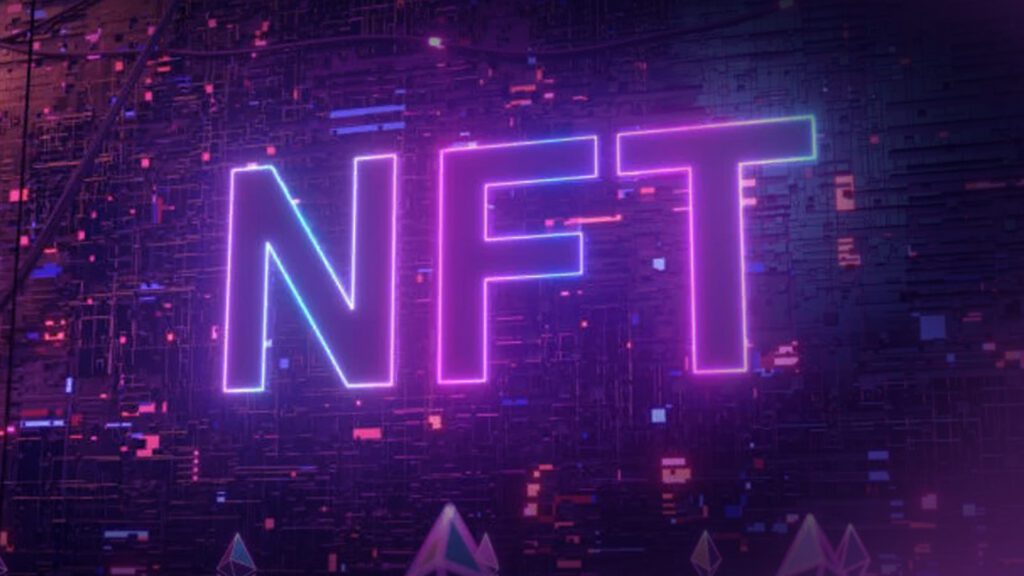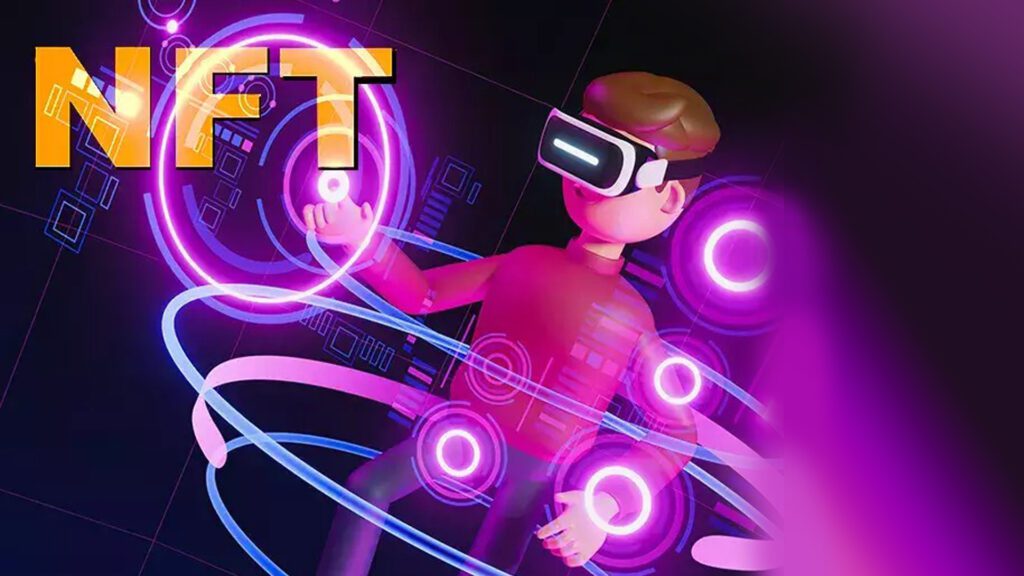The non-fungible token (NFT) phenomenon has swept the globe due to its capacity to have value for everything from art to music to simple selfies.
As a result of the growing attention of celebrities and tech enthusiasts, NFTs sales increased by $25 billion in 2021, according to industry data tracker DappRadar. Other experts, however, believe NFTs are speculative bubbles that will burst soon.
In the last few years, you may have heard the terms cryptocurrency and NFT unless you were living under a rock or in a remote location on Earth. But, in your heart of hearts, do you actually understand what they are? We highly recommend taking the time to clarify these commonly used terms. Here are a few basic things you need to know about NFTs and Cryptocurrency.
What makes NFTs different from Cryptocurrencies?
NFTs and cryptocurrencies are quite different, even though they are built on the blockchain.
For example, if you own one cryptocurrency token, such as Ethereum, the next one will be the same. Cryptocurrencies are fungible or interchangeable, as are all types of money. A non-fungible NFT is a form of money that is not the same as another. Art is unique and non-fungible, so each piece is not the same as the others.
NFTs are categorized as a subset of crypto culture, so it makes sense that they can only be traded with cryptographic forms of money. Moreover, since they’re based on the blockchain, they employ similar innovations and standards.
It is clear in the name, however, that cryptocurrency is not a form of currency, but rather a kind of money with economic value. Cryptocurrencies are also fungible. That means whatever crypto tokens you hold in a cryptocurrency, they are equally valuable; 1 ETH equals 1 ETH, no matter what. In contrast, NFTs are not fungible and have a value that goes beyond economics.
It is likely that cryptocurrency will have an impact on the financial industry, but NFTs may have a greater impact on your life. Not only do NFTs give people power and money, but will they simply burst? We shall see.
Compared to Cryptocurrencies, how are NFTs different?
An image, a song, a movie, and a trading card are examples of non-fungible tokens, which address certifiable items like music and movies. The customer receives a unique digital file instead of a picture to hang on the wall, as they can exchange and keep them in a digital ledger on the internet. In addition to advanced collectible characters, virtual lands, and one-of-a-kind online media pieces, nearly any digital asset can be created and sold as an NFT.
NFTs are nonfungible, meaning they cannot be interchanged. There is a difference between NFTs and fungible tokens like bitcoin, which can be exchanged among one another. The NFTs are distributed on blockchain-based digital platforms.
Cryptocurrency – what is it exactly?

The primary benefit of cryptocurrency is that it is invisible to counterfeiters and makes double-spending practically impossible. Blockchain technology is at the core of several cryptocurrencies because it allows for a distributed ledger that is maintained by a worldwide network of computers. The major difference between cryptocurrencies and traditional currencies is that they do not have a centralized authority, therefore they cannot be manipulated or interfered with by the government.
A cryptocurrency network, by its nature, is decentralized, based on blockchain technology, where a large network of computers maintains and enforces a distributed ledger. Decentralization is one of the defining characteristics of cryptocurrencies, which makes them immune from manipulation or interference by governments.
Generally speaking, Cryptocurrencies are attractive to the general public primarily because of this, though not exclusively. One of the reasons they’re becoming increasingly popular is the fact that they’re cheaper and faster than traditional methods of sending money across borders than traditional methods.
“Web 3.0” is often seen by experts in the field as something revolutionary for the future. Many experts in the field feel this will be a revolutionary development in the future, akin, almost, to the birth of the printing press and other groundbreaking decentralization events in history.
But let’s not overestimate our ability. Several cryptocurrencies like Bitcoin rely heavily on blockchain technology to function and appeal. Data “blocks” form an interconnected set called a “chain” on an enormous interconnected ledger, as its name would suggest. A sequence of verifications must be performed by each node on the network prior to a new block (or entry on the ledger) being created. With this system, it would be nearly impossible to alter historical transactions on the network, since the contents of the ledger must be deemed acceptable by the entire network as a whole.
You can either buy or sell cryptocurrencies on specialist exchanges or brokers or mine them on computers (also known as mining rigs) with the help of specialized computing hardware. Although traditional currency can also be used to make cryptocurrency purchases, the high volatility and skyrocketing values of certain types of cryptocurrencies, such as Bitcoin, have made many cryptocurrencies popular investment and trading instruments for large and small investors alike.
Bitcoin, and in particular the blockchain technology that supports it, has far wider implications than simply serving as a medium of exchange. Many experts agree that blockchain technology will revolutionize many industries and has very significant implications for our daily lives.
In addition to tracking supply chains, online voting, logging real estate transactions, managing legal contracts, and securing medical data, blockchain is already used for a number of other purposes. This technology is still very much in its infancy, and we may not even be able to gauge just how powerful and important it will become ten years from now.
Who can purchase NFTs?

NFTs can be purchased by anyone who has a Bitcoin or Ethereum wallet. The only prerequisite is to have a Bitcoin or Ethereum wallet. No KYC documentation is required to purchase art. To buy and sell NFTs, you need an NFT marketplace and a cryptocurrency wallet powered by Metamask.
The best non-fungible token (NFT) marketplace is:
- NFTICALLY
Through our’s B2B SaaS platform, white-label NFT marketplaces for influencers, gamers, and celebrities can be quickly created.
We allow companies and individuals to create their own custom APIs and integrations, as well as terms and conditions, further personalizing their own NFT marketplace.
Our White Label NFT Marketplace can offer the following benefits to your company:
Designed for Enterprises– KYC, granular access permissions, SEO optimization, and automated funding are features that are designed to meet Celebrities’ & Businesses’ demands for ease, security, and simplicity.
Multiple blockchain support – Several blockchains evolve over time. By utilizing several blockchains for a specific retail collection, you can specify business goals.
One-stop shop for everything NFT – We offer users the latest and greatest NFTs and the option to integrate their own CRM, marketing, and analytics.
Are there any risks associated with purchasing NFTs?

As with every other entity, NFTs also have hidden fault lines. A variety of examples of NFT fraud have been documented recently, including the creation of bogus markets, imitation of actual artists by unverified vendors, and half-price reproductions of their artworks.
Ozzy Osbourne’s CryptoBatz collection, an NFT collection, went online recently, causing concern among several cryptocurrency holders about a possible phishing link depleting their wallets.
Until January 20, a fake NFT project was visited by at least 1,330 people. On January 20, an Ethereum wallet associated with the scammers received inbound transfers totaling 14.6 ETH ($40,895).
Todd Kramer claims to have been hacked after purchasing eight Bored Ape Yacht Club (BAYC) NFTs for $2.28 million (roughly Rs 16.94 crore).
The assets created by Todd Kramer were “frozen” by the blockchain-based NFT marketplace OpenSea, and included one Clonex, seven Mutant Ape Yacht Club, and eight BAYC NFTs worth about 615 Ether.
The first and most important problem associated with NFTs is their undeniably severe environmental impact. Crypto mining relies on high-performance computers that operate at high capacity to verify transactions, which will eventually harm the environment.
Conclusion
The role that NFTs play in the crypto market in this blog is explained, as well as the differences between them and other Cryptocurrencies. We hope you found this content to be meaningful.
Please feel free to post any questions you have in the blog’s comment section, and a member of our staff will get in touch as soon as possible.




